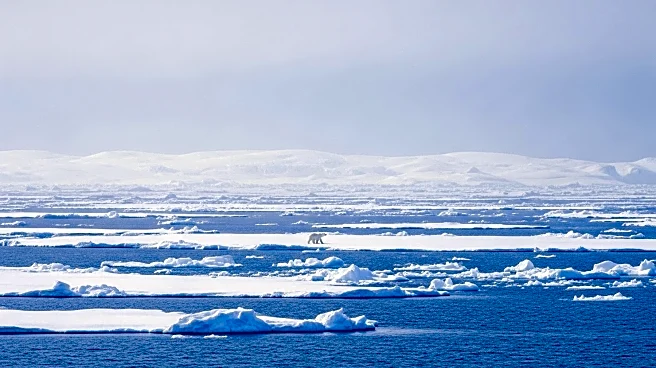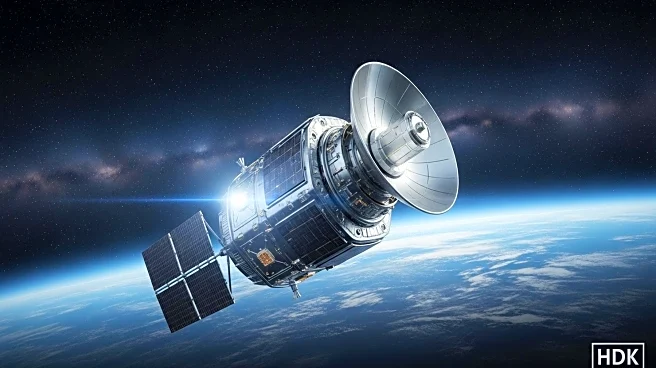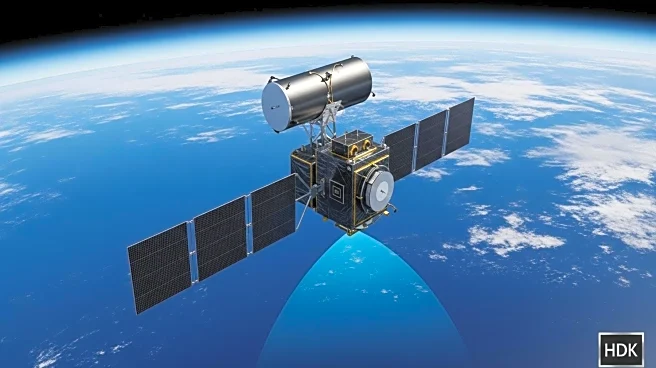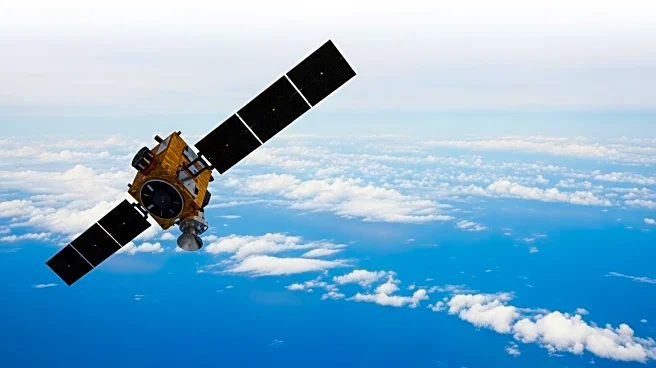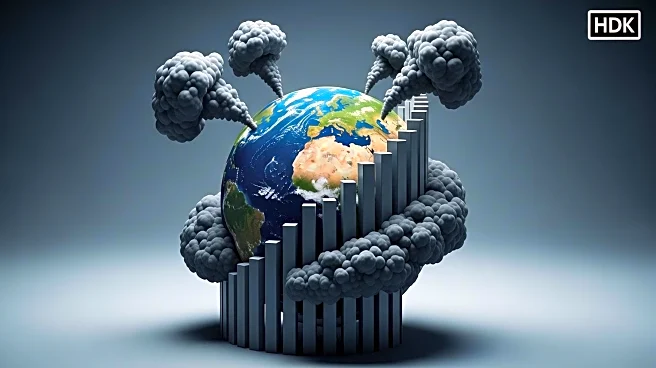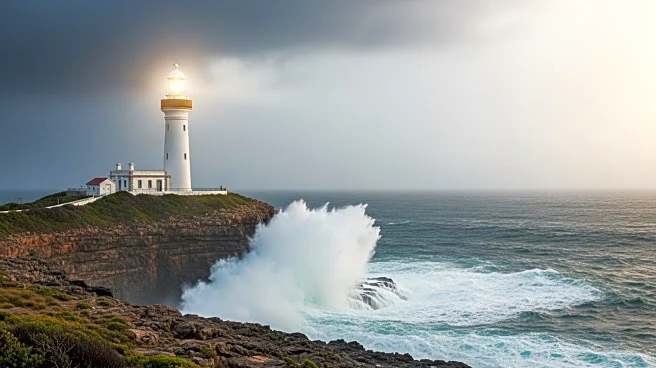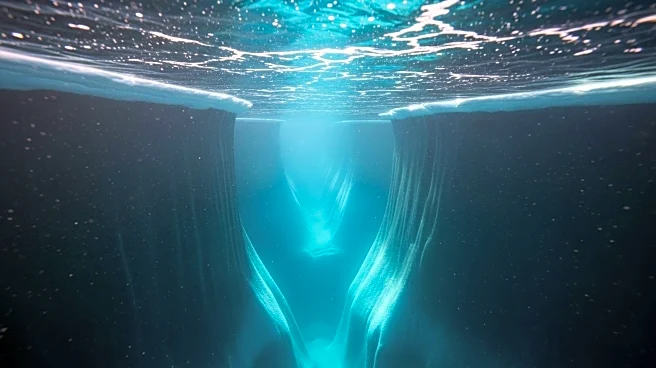What's Happening?
NASA and the National Snow and Ice Data Center have reported that the Arctic sea ice extent reached its annual minimum on September 10, tying with 2008 for the 10th-lowest on record at 1.78 million square miles. This marks a continuation of the downward trend observed since satellite tracking began in 1978. The decline is attributed to rising global temperatures, although this year's minimum did not set a new record low. In contrast, Antarctic sea ice is nearing its annual maximum but remains relatively low compared to pre-2016 levels.
Why It's Important?
The ongoing decline in Arctic sea ice is a significant indicator of climate change, affecting global weather patterns and ecosystems. Reduced ice coverage impacts marine habitats and indigenous communities, while contributing to rising sea levels. The data collected by NASA and NOAA is crucial for understanding these changes and informing policy decisions on climate action. The situation in Antarctica, while complex, also poses challenges for predicting future ice trends and their global implications.
What's Next?
Scientists will continue monitoring sea ice levels using satellite data to track changes and predict future trends. The focus will be on understanding the factors driving these changes and their potential long-term impacts on global climate systems. Efforts to mitigate climate change through international agreements and policies may be influenced by these findings.
Beyond the Headlines
The decline in sea ice has broader implications for geopolitical interests in the Arctic, including resource exploration and shipping routes. As ice coverage decreases, new opportunities and challenges arise for nations with Arctic territories, potentially leading to increased international competition and collaboration.

